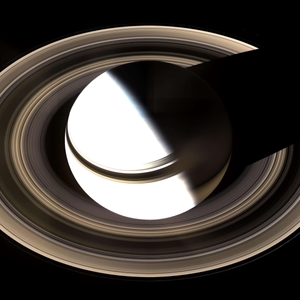
Silicon Valley Astronomy Lectures
Silicon Valley Astronomy Lectures
All episodes
Best episodes
Seasons
Top 10 Silicon Valley Astronomy Lectures Episodes
Goodpods has curated a list of the 10 best Silicon Valley Astronomy Lectures episodes, ranked by the number of listens and likes each episode have garnered from our listeners. If you are listening to Silicon Valley Astronomy Lectures for the first time, there's no better place to start than with one of these standout episodes. If you are a fan of the show, vote for your favorite Silicon Valley Astronomy Lectures episode by adding your comments to the episode page.
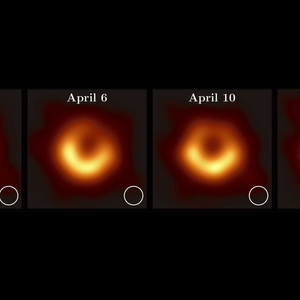
What Does a Black Hole Look Like: How We Got our First Picture (With Prof. Eliot Quataert)
Silicon Valley Astronomy Lectures
09/15/21 • 77 min
Black holes are one of the most remarkable predictions of Einstein's theory of gravity: so much material is compressed into such a small volume that nothing, not even light, can escape. In Spring 2019, the world-wide Event Horizon Telescope released the first real picture of gas around a massive black hole and the “shadow” it makes as the gas swirls into the black hole. Dr. Quataert (University of California, Berkeley) describes how these pioneering observations were made and what they have taught us about black holes.
Recorded on Jan. 22, 2020
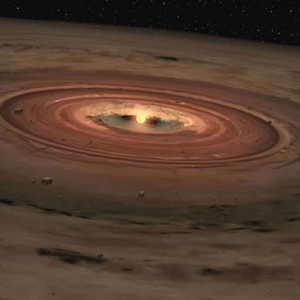
Ashes to Ashes, Earth to Earth, Dust to Dust: The Birth and Death of Worlds
Silicon Valley Astronomy Lectures
07/14/23 • 65 min
with Dr. Eugene Chiang (University of California, Berkeley)
June 21, 2023
We now know that our solar system is but one of countless others. Where did all these planets come from? What are their fates, and ours? Dr. Chiang describes the life cycle of planets, how they are born and die, and how they are born again. The story combines the latest observations from a wide range of telescope with our evolving theoretical understanding of the role planets play in the development of the cosmos.
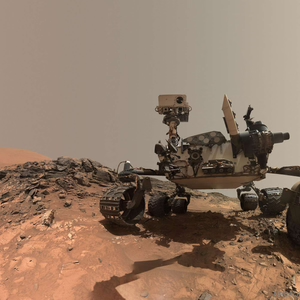
When Mars Was Like Earth: Five Years of Exploration with the Curiosity Rover
Silicon Valley Astronomy Lectures
08/02/22 • 90 min
Speaker: Dr. Ashwin Vasavada, of NASA’s Jet Propulsion Laboratory
For five years, Curiosity explored Gale Crater, one of the most intriguing locations on Mars -- once the site of an ancient lake. In this talk, the mission's Project Scientist discussed what the rover was capable of and the many things it discovered on and about the red planet. In particular, he fills us in on the evidence that ancient Mars, billions of years ago, was much more like the Earth -- with a thicker atmosphere and flowing water on its surface. (Recorded Feb. 28, 2018)
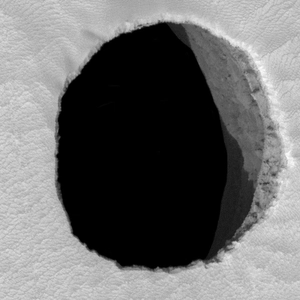
Planets Under Our Feet: The Caves on Earth, Mars, and Beyond (with Dr. Penelope Boston)
Silicon Valley Astronomy Lectures
03/26/22 • 83 min
New exploration indicates that caves may be more common on rocky and icy worlds in our Solar System than we have thought in the past. Caves below the Earth show us a very different planet than the familiar one we experience on the surface. Each dark cave system has its own micro-organisms and distinctive mineral and chemical properties. Dr. Penelope Boston, NASA Ames Research Center, takes us on a tour of the some of the most spectacular caves under the Earth and the unusual life-forms they harbor, and considers how the lessons they teach us can be applied to the exploration of the Solar System, especially the icy moons of the giant planets.
(Recorded Feb. 27, 2019)
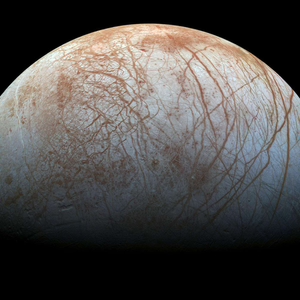
Ocean Worlds in Our Solar System (with Dr. Kevin Hand)
Silicon Valley Astronomy Lectures
01/07/22 • 93 min
Where is the best place to find living life beyond Earth? It may be that the small, ice-covered moons of Jupiter and Saturn harbor some of the most habitable real estate in our Solar System. Life loves liquid water and these moons have lots of it! Such oceans worlds have likely persisted for much of the history of the solar system, and as a result they are compelling targets for our exploration. Dr. Kevin Hand (of the Jet Propulsion Lab) explains the science behind our understanding of these worlds, with a special focus on Jupiter’s intriguing moon Europa, which is a top priority for future NASA missions. Dr. Hand is also the author of a popular-level book "Alien Oceans: The Search for Life in the Depths of Space." (Recorded Apr. 10, 2019.)
Dr. Hand is a planetary scientist at JPL in Pasadena, California and the Director of its Ocean Worlds Lab. His research focuses on the origin, evolution, and distribution of life in the solar system with an emphasis on Europa. From 2011 to 2016, Hand served as Deputy Chief Scientist for Solar System Exploration at JPL. His work has brought him to the Dry Valleys of Antarctica, the sea ice near the North Pole, the depths of the Earth’s oceans, and to the glaciers of Kilimanjaro. Dr. Hand was a scientist onboard James Cameron’s 2012 dive to the bottom of the Mariana Trench, and he was part of a 2003 IMAX expedition to hydrothermal vents in the Atlantic and Pacific oceans.

The Allure of the Multiverse (with Dr. Paul Halpern)
Silicon Valley Astronomy Lectures
04/24/24 • 76 min
Apr. 17, 2024
In this talk, physicist and popular author Paul Halpern (St. Joseph's College) examines the history of the concept of a multiverse in science, and discusses the ideas by Einstein and other noted physicists that have led scientist today to take the notion of multiple universes seriously. He also contrasts the scientific view of a multiverse to the picture we get in popular culture (think Marvel movies) and notes how significantly the two differ. Dr. Halpern is the author of a new popular-level book also called "The Allure of the Multiverse" and many other nontechnical science books.
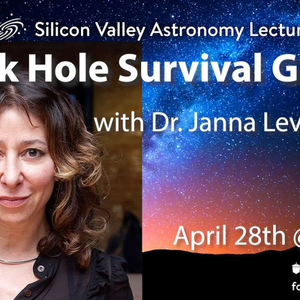
Black Hole Survival Guide with Dr. Janna Levin
Silicon Valley Astronomy Lectures
08/01/21 • 70 min
May 22, 2021, Dr. Janna Levin (Columbia University's Barnard College)
Dr. Levin helps us to understand, and to find delight in, black holes – perhaps the most opaque theoretical construct ever imagined by physicists. She takes us on an exploratory tour of the neighborhood of a black hole, and help us feel the visceral experience of encountering black holes of different masses. The title of the talk is also the title of her recently published popular-level book. (Originally scheduled for April, this talk had technical problems, and was re-recorded successfully in May.)
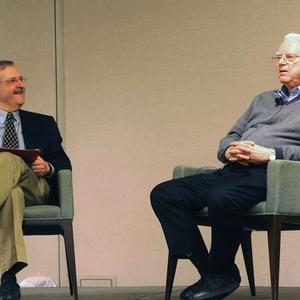
SPECIAL: An Interview with Frank Drake: The Founder of SETI Science (conducted by Andrew Fraknoi)
Silicon Valley Astronomy Lectures
07/17/23 • 44 min
June 2012
Frank Drake (1930-2022) was known as the "father of SETI science" -- he was the scientist who conducted the first radio survey for signals from extraterrestrial civilizations, and came up with the formula for estimating the likelihood of such civilizations, now called the Drake Equation.
In June 2012, the SETI Institute sponsored a three-day public event called SETICon. One highlight of the program was an interview with Drake (who served as the founding President of the Institute board. ) It was conducted by SETI Institute board member and veteran astronomy educator Andrew Fraknoi. The discussion ranged widely over Dr. Drake's career and current thinking. It included reminiscences of Project OZMA, that first experiment searching for signals from civilizations among the stars, and his current view of the Drake Equation. He also reflects on a number of modern developments, including the discovery of numerous planets orbiting other stars and new ways of searching for extra-terrestrial civilizations.
During the Summer, when the Silicon Valley Astronomy Lectures take a vacation, we thought you might enjoy this special podcast for its historical value, now that Frank Drake has passed away.
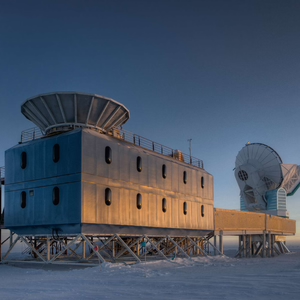
Cosmology and Ambition: Losing the Nobel Prize (with Dr. Brian Keating)
Silicon Valley Astronomy Lectures
04/08/22 • 76 min
What would it have been like to be an eyewitness to the Big Bang? In 2014, astronomers using the powerful BICEP2 telescope at the South Pole thought they’d glimpsed evidence of the period of cosmic inflation at the beginning of time. Millions around the world tuned in to the announcement, and Nobel whispers spread like wildfire. But had these scientists been deceived by a galactic mirage? In this popular-level talk, cosmologist Brian Keating tells the inside story of BICEP2’s detection and the ensuing scientific drama. He provocatively argues that the Nobel Prize actually hampers scientific progress by encouraging speed and competition while punishing inclusivity, collaboration, and bold innovation.
Dr. Keating is s a cosmologist at the University of California San Diego and Principal Investigator of the Simons Observatory collaboration in Chile. He is the author of a popular book, Losing the Nobel Prize: A Story of Cosmology, Ambition, and the Perils of Science’s Highest Honor.
This talk was recorded on Nov. 14, 2018.
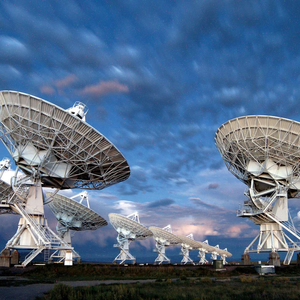
Our Boldest Effort to Answer our Oldest Question: Breakthrough-Listen Search for Intelligent Life
Silicon Valley Astronomy Lectures
02/20/23 • 85 min
For centuries, humans have gazed at the night sky and wondered if any intelligent life forms like us might be out there. In 2015, the Breakthrough Foundation gave a $100 million grant to the University of California at Berkeley to undertake the most comprehensive search for signals from an extra-terrestrial civilization. Dr. Steve Croft, of the University of California, Berkeley, SETI Center, describes the project, introduces the many radio telescopes around the world it is using in the search, and explains how modern technology, including AI, is being used to include more stars, more frequencies (channels) and more ways a signal might be sent.
Show more best episodes

Show more best episodes
FAQ
How many episodes does Silicon Valley Astronomy Lectures have?
Silicon Valley Astronomy Lectures currently has 53 episodes available.
What topics does Silicon Valley Astronomy Lectures cover?
The podcast is about Space, Astrophysics, Astronomy, Podcasts, Science and Cosmology.
What is the most popular episode on Silicon Valley Astronomy Lectures?
The episode title 'Ashes to Ashes, Earth to Earth, Dust to Dust: The Birth and Death of Worlds' is the most popular.
What is the average episode length on Silicon Valley Astronomy Lectures?
The average episode length on Silicon Valley Astronomy Lectures is 77 minutes.
How often are episodes of Silicon Valley Astronomy Lectures released?
Episodes of Silicon Valley Astronomy Lectures are typically released every 21 days, 2 hours.
When was the first episode of Silicon Valley Astronomy Lectures?
The first episode of Silicon Valley Astronomy Lectures was released on Jun 20, 2021.
Show more FAQ

Show more FAQ